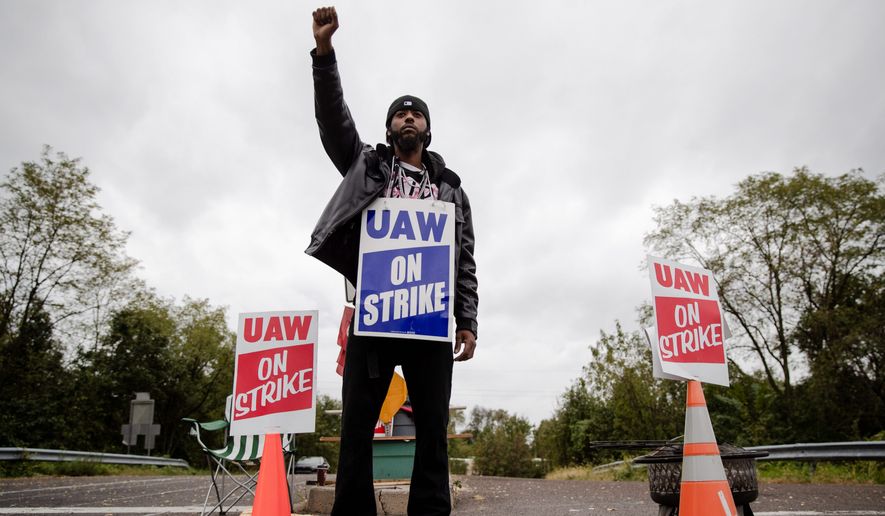The largest labor strike in decades neared an end Wednesday as the United Auto Workers struck a tentative deal with General Motors Co., paving the way for nearly 49,000 employees to return to work soon.
Although terms of the tentative four-year contract were not made public, some details trickled out. Reports said negotiators addressed pay raises, lump-sum payments to workers and requirements that GM build new vehicles in U.S. factories.
“Out of respect for our members, we will refrain from commenting on the details until UAW and GM leaders gather together and receive all details,” the union said in a statement about the deal, which was confirmed by GM.
The 31-day strike did not end Wednesday, and workers are likely to remain on picket lines through Friday.
UAW officials are scheduled Thursday to gather in Detroit and decide whether to send the tentative agreement to union hall leaders across the country for a ratification vote. The strike will end if a majority of union members support the deal.
GM has shuttered 33 manufacturing plants in nine states along with factories in Canada and Mexico. The strike has cost the nation’s largest automaker roughly $2 billion in lost production, according to analysts. Picketing workers, meanwhile, lost on average more than $3,000 in wages and have been living on $250 per week in strike pay.
During months of negotiations, the two sides have battled over a host of sensitive issues, including wage increases, profit sharing, the status of temporary workers, health care benefits and the long-term futures of several U.S.-based GM plants.
Auto industry analysts were awaiting details to assess the overall state of the market.
“I thought it was going to be a significant strike but not as long as it has been,” Kristin Dziczek of the Center for Automotive Research told The Washington Times. “We need to see the ink dry to really understand what it means.”
Wall Street reacted favorably to the prospect of GM and its subsidiary parts makers soon returning to work. The automaker’s shares were up 1.08% at the end of trading Wednesday after dropping about 5% since the strike began.
Anderson Economic Group, a research and market analysis firm based in East Lansing, Michigan, has been issuing weekly estimates on the strike’s collateral financial damage. CEO Patrick Anderson said in an email that direct wage losses for all employees, not taking into account strike pay, were in excess of $835 million.
The federal government has lost about $313 million in income and payroll taxes while Michigan has lost $18.5 million in income taxes, Mr. Anderson added.
The community of striking workers near GM’s pickup truck assembly plant in Flint, Michigan, was eager for more details about the tentative deal and expressed triumph in the negotiations. Once a hub of industrial activity, the blue-collar city now has just one major factory: the GM truck plant. Locals said a makeshift tent city has sprung up for pickets near the plant, sustained by a steady stream of donated food and supplies, including trees and barrels to burn wood for warmth in the autumn weather.
“It has been a great experience. Everyone has been sticking together and striking together,” Stephanie Bond, manager of the Fisher Hall Bingo parlor near the plant, told The Times.
If workers ratify the UAW’s tentative deal, union negotiators would then turn full attention to talks at Ford Motor Co. and Fiat Chrysler Automobiles NV, using the GM contract as a template.
• This article is based in part on wire service reports.
• Dan Boylan can be reached at dboylan@washingtontimes.com.




Please read our comment policy before commenting.